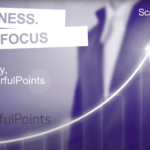

With the ongoing rollout of 5G in Australia and the evolving capabilities of hardware and handheld tech, the potential for integrating emerging technology into the graphic design space has never been greater. And one of the greatest opportunities it offers is in the area of augmented reality (AR) and virtual reality (VR).
The future is here
While AR and VR may sound complex and futuristic, they’re not – they’re just new ways to communicate and entertain, and they’re here to stay. But be warned. The medium – no matter how new and exciting – should never overpower what’s being communicated. We don’t want our audience so engaged with the experience that they miss the message! If that happens, all we’ve done is entertain which, while you’ll have no doubt amused your audience, may not have actually met the brief: which was to educate and enlighten, “sell” your business or brand, and, ultimately, generate a return on your investment.
VR, in particular, can be expensive to produce and challenging for audiences to engage with. To interact with a VR campaign, as a consumer, you need to stop what you’re doing and put on a headset. There’s equipment, technology, and adjusting to the new experience to contend with. It’s not like switching on the radio, or TV, or clicking a link on a laptop or phone.
Enhancing the experience
But AR already offers significant opportunities to add to the experience of everyday life. Engaging with an AR campaign can be as simple as looking at your phone, the windscreen of your car or – better still – projected on to the inside lens of your glasses (or even contact lenses!).
AR is an emerging trend in the world of marketing and sales. It allows companies to give customers unique brand experiences through conveniently activating their mobiles. This makes available a brand new tool for promoting sales and bolstering a brand’s value.
The benefits of interactivity
As far back as 2015, US hardware giant Home Depot took an innovative step in launching its “Project Color” app. Customers could now decide if that oval-shaped mirror would look good in their guest bathroom, or how paint shade X, Y or Z would look on the walls of their homes. The app’s use of AR patented technology factored in the room’s lighting, shadows, and objects to give a more accurate depiction of how a specific colour would appear as in that room.
In 2017, that same company introduced an additional feature which allowed customers to see how different furniture (or homewares) would work in their homes. IKEA also made the same technology available in Australia. The AR tech used by IKEA’s app has made it easy and convenient to select an item, and it’s been a huge success.
This interactive technology is more than just a novelty or a new frontier in gaming. It’s set to be one of the driving forces behind sales and marketing innovations in the near future. Forward-thinking businesses will already be planning to integrate AR into their customers’ experience with a view to enhancing it – and increasing sales.




